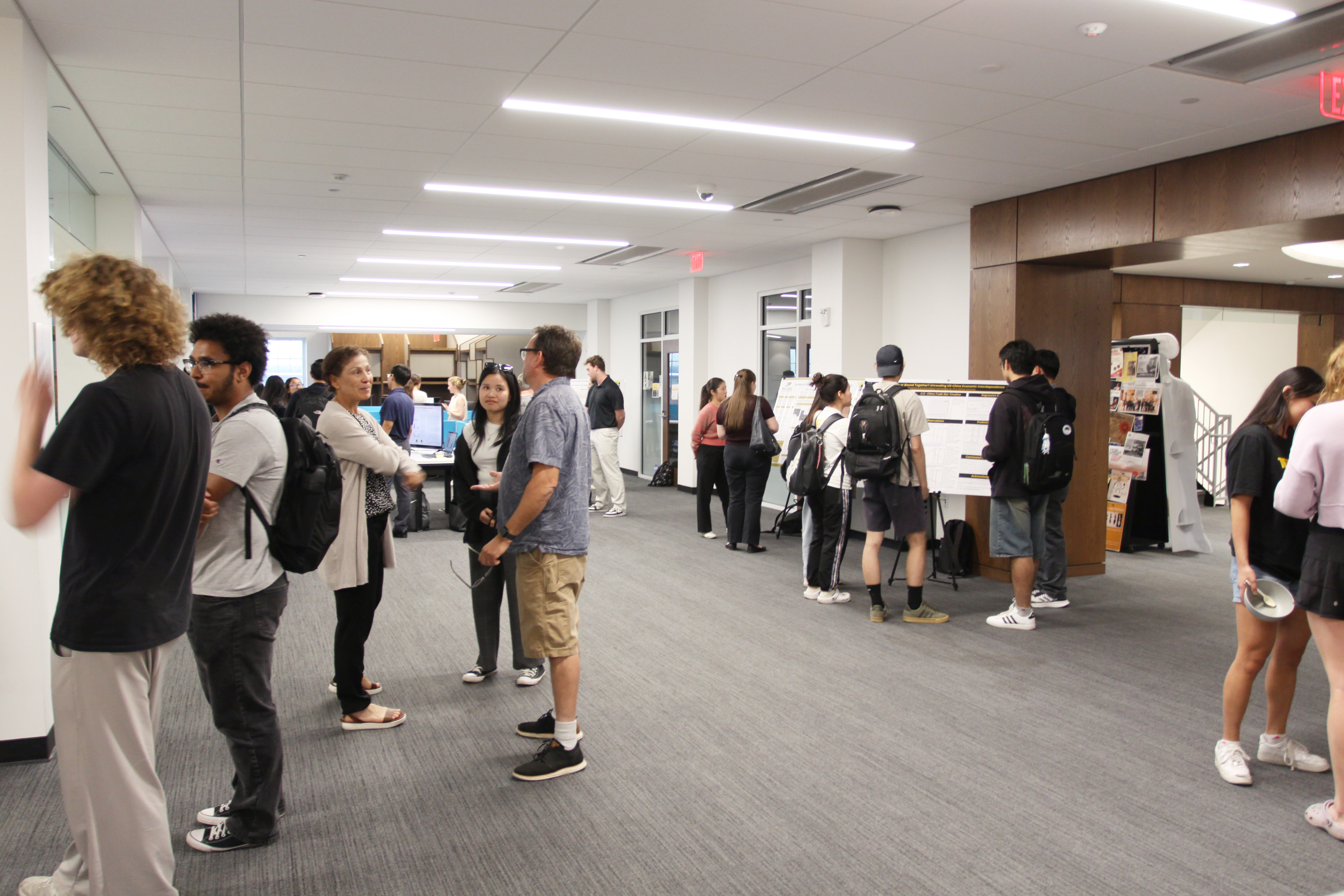Files
Download Full Text (500 KB)
Document Type
Poster
Publication Date
Fall 2024
Abstract
In our exploration of the interactions between water and amide osmolytes, we focused on the effects of urea and acetamide on the stability of reverse micelles (RMs) formed with Sodium Bis(2-ethylhexyl)sulfosuccinate (AOT) in isooctane. Water, with its unique polarity and its ability to facilitate hydrogen and proton transfer, played a crucial role in our study, as we aimed to uncover how these amides would influence micellar behaviour. Our results revealed a compelling contrast between urea and acetamide. Acetamide, with its lower polarity due to a methyl group substitution, demonstrated superior solubility and significantly reduced precipitate formation compared to urea. This enhanced stability suggests that acetamide's structural properties allow for a more harmonious integration within the micellar system. Employing dynamic light scattering (DLS) and fluorescence spectroscopy, we found that increasing the water-to-surfactant ratio (w0) led to a marked rise in the fluorescence intensity of the coumarin dye (C343). This indicated greater accommodation of dye molecules in the core of the RMs, enhancing our understanding of micellar dynamics. In contrast, varying the concentration at a constant w0 resulted in inconsistent fluorescence trends, underscoring the complexities inherent in micellar behaviour. Ultimately, our study highlights the pivotal role of amide polarity in determining micellar stability, paving the way for future research into the implications of these interactions in biological and chemical contexts. We set the stage for novel applications and further investigations into micellar systems by deepening our insights into osmolyte behaviour.
Recommended Citation
Walsh, Kate '26; Gourley, Bridget; and Levinger, Nancy E., "A Comparative Analysis of Urea vs. Acetamide in AOT reverse micelles" (2024). Annual Student Research Poster Session. 154.
https://scholarship.depauw.edu/srfposters/154




Funding and Acknowledgements
Funding provided by National Science Foundation Awards #1956198 and #1956323